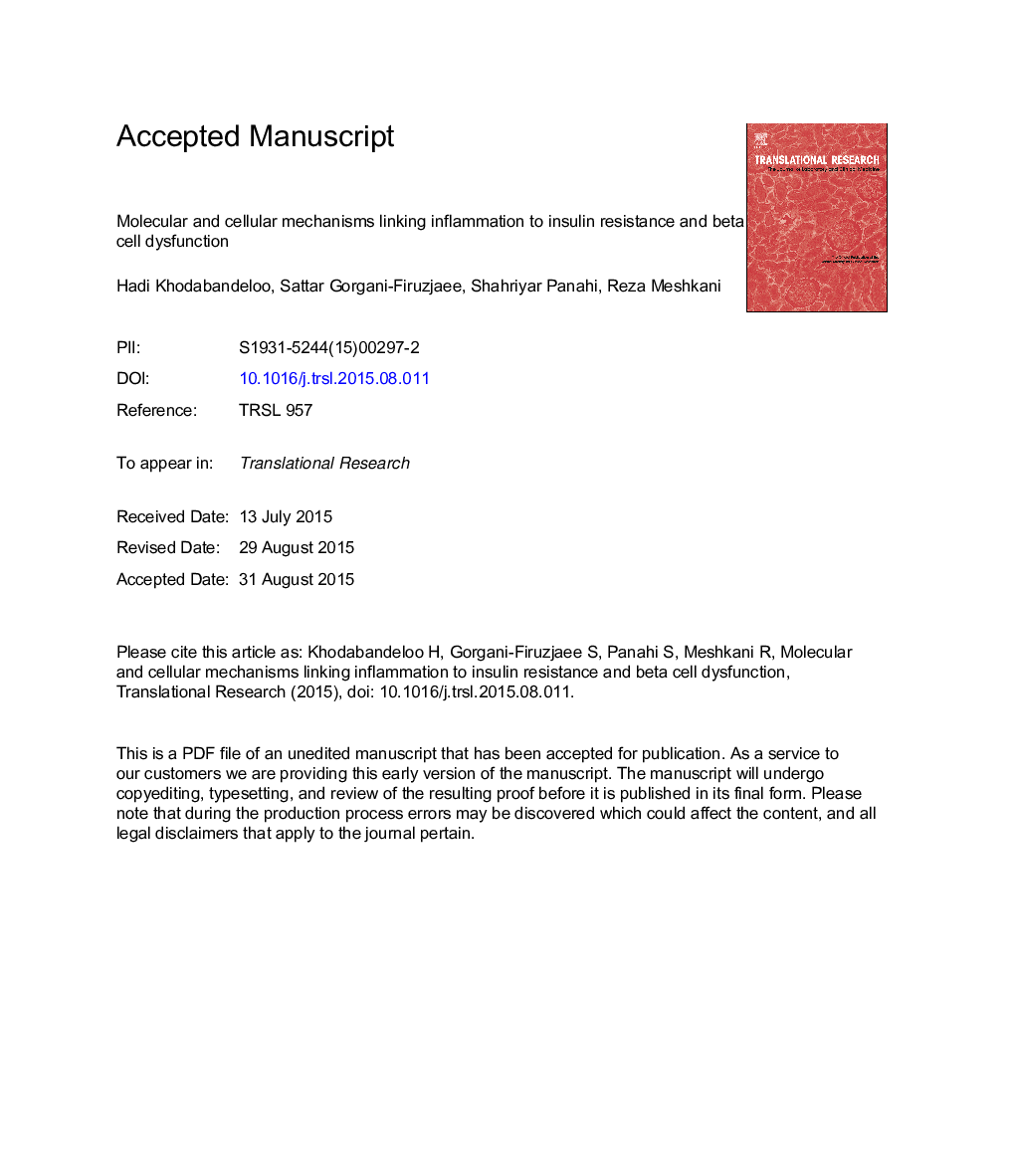| Article ID | Journal | Published Year | Pages | File Type |
|---|---|---|---|---|
| 6155959 | Translational Research | 2016 | 69 Pages |
Abstract
Obesity is a major public health problem worldwide, and it is associated with an increased risk of developing type 2 diabetes. It is now commonly accepted that chronic inflammation associated with obesity induces insulin resistance and β-cell dysfunction in diabetic patients. Obesity-associated inflammation is characterized by increased abundance of macrophages and enhanced production of inflammatory cytokines in adipose tissue. Adipose tissue macrophages are suggested to be the major source of local and systemic inflammatory mediators such as tumor necrosis factor α, interleukin (IL)-1β, and IL-6. These cytokines induce insulin resistance in insulin target tissues by activating the suppressors of cytokine signaling proteins, several kinases such as c-Jun N-terminal kinase, IκB kinase β, and protein kinase C, inducible nitric oxide synthase, extracellular signal-regulated kinase, and protein tyrosine phosphatases such as protein tyrosine phosphatase 1B. These activated factors impair the insulin signaling at the insulin receptor and the insulin receptor substrates levels. The same process most likely occurs in the pancreas as it contains a pool of tissue-resident macrophages. High concentrations of glucose or palmitate via the chemokine production promote further immune cell migration and infiltration into the islets. These events ultimately induce inflammatory responses leading to the apoptosis of the pancreatic β cells. In this review, the cellular and molecular players that participate in the regulation of obesity-induced inflammation are discussed, with particular attention being placed on the roles of the molecular players linking inflammation to insulin resistance and β-cell dysfunction.
Keywords
AMPKNF-κBLPSIL-6JnkMYD88IL-4FFAPAMPsERKPP2AiNOSHFDMCP-1IRSIL-1βIL-10IFN-γT2DUPRPKCIRE1CX3CR1GLUTCCR2CCLTLR4TRAF2LTB4SOCSCXCLNLRP3PRRsPDX-1mTORCCX3CL1Th1IL-13IAPPIKKβchemokine (C-C motif) receptor 2TSC1TSC2PTP1BNLRsTuberous sclerosis 1PI3-kinaseSHIP2chemokine (C-X3-C motif) ligand 1inositol-requiring protein 1AMP-activated protein kinasec-Jun N-terminal kinasePancreatic and duodenal homeobox 1IκB kinase βMAPKPTPsROST-helper 1Free fatty acidpathogen-associated molecular patternsinsulin receptor substrateinterleukin 1 βInterleukin 10interleukin 13Interleukin 4interleukin 6WAT, White adipose tissuetumor necrosis factor αGlucose transporterATMType 2 diabetesdiacylglycerolDAGhigh-fat dietsuppressors of cytokine signalingNK cellregulatory T cellTreg cellNatural killer cellsinducible nitric oxide synthaseendoplasmic reticulumTNF-αnuclear factor kappa Bphosphatase and tensin homologLarLeukotriene B4chemokine (C-C motif) ligandlipopolysaccharideCXC chemokine ligandadipose tissue macrophagesNitric oxideMammalian target of rapamycin complexmyeloid differentiation primary response gene 88Unfolded protein responsemonocyte chemotactic protein 1protein tyrosine phosphatasesProtein tyrosine phosphatase 1Bprotein phosphatase 2AProtein kinase Cmitogen-activated protein kinaseIslet amyloid polypeptideWATPtenextracellular signal-regulated kinaseInterferon gammaReactive oxygen speciesToll-like receptor 4NOD-like receptorspattern recognition receptors
Related Topics
Health Sciences
Medicine and Dentistry
Medicine and Dentistry (General)
Authors
Hadi Khodabandehloo, Sattar Gorgani-Firuzjaee, Ghodratollah Panahi, Reza Meshkani,
